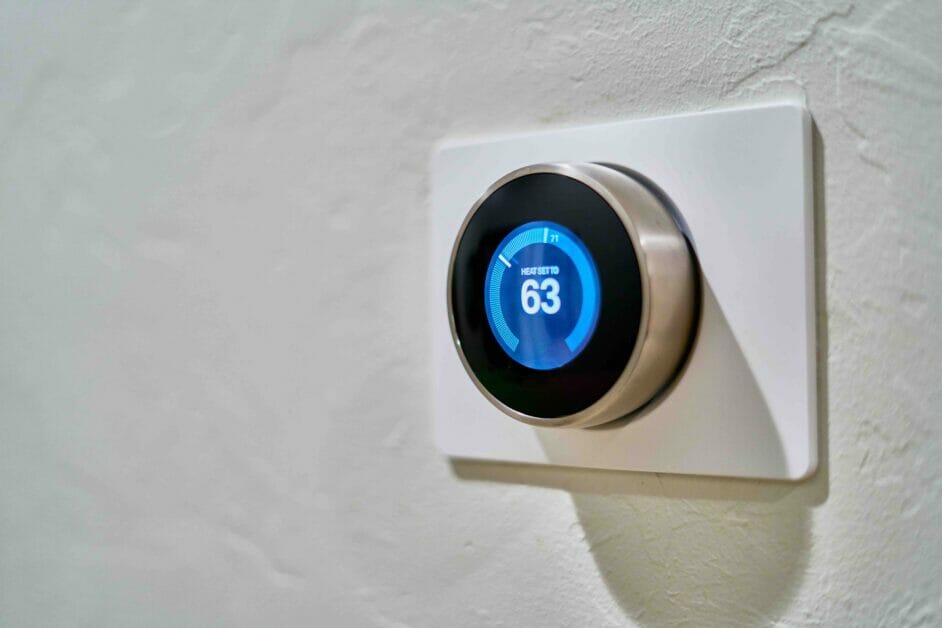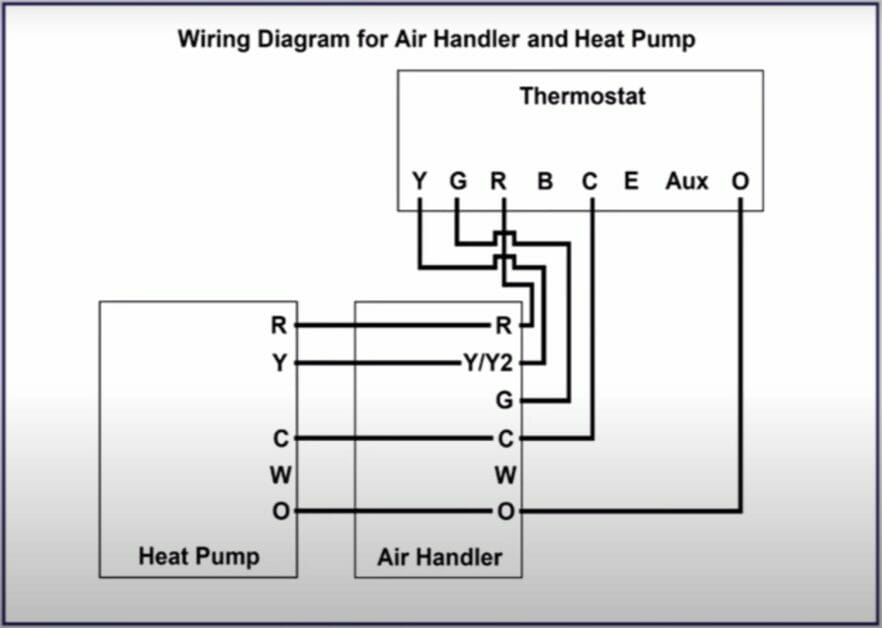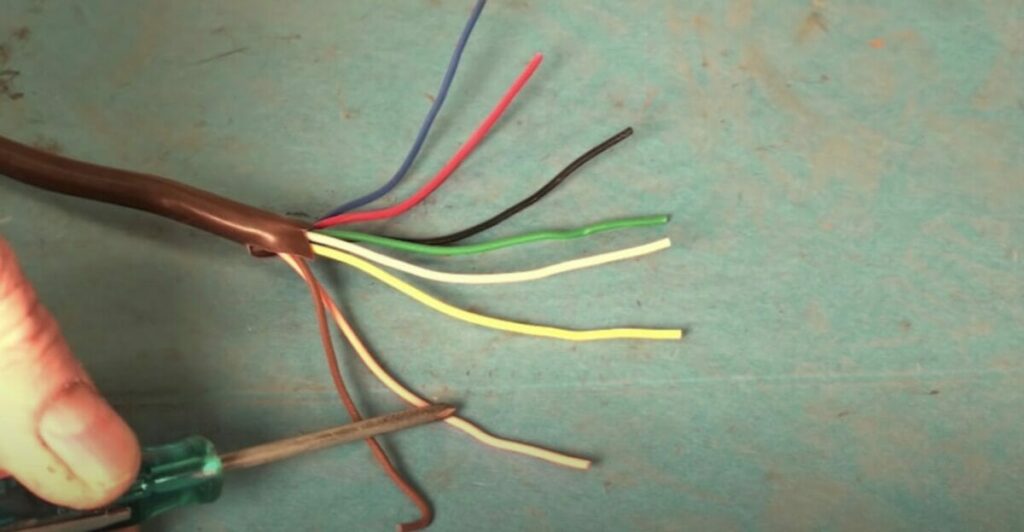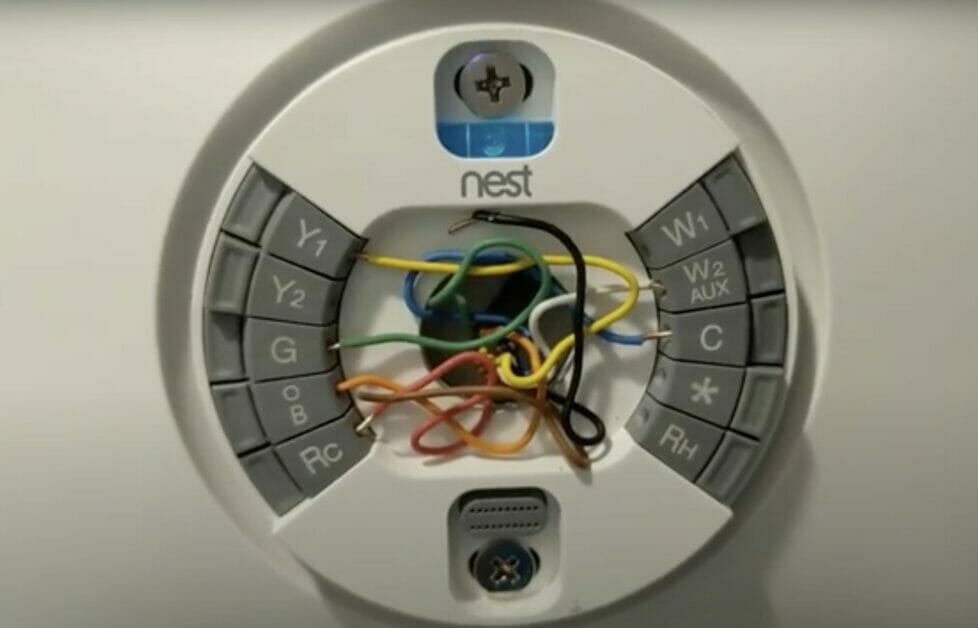What is the Orange Wire on a Thermostat? (Understanding its Role)

You know, I’ve always been a bit of a tinkerer myself. There’s something satisfying about rolling up your sleeves and fixing things around the house. But wiring can be a bit difficult; you get lost without a wiring diagram – or, in this case, the orange wire on your thermostat looks slightly intimidating. You’ve seen it.
Well, let me tell you straight off: the orange wire on your thermostat is typically linked to your heat pump. It’s what controls the reversing valve and switches the system between cooling and heating modes, ensuring efficient performance in variable climates.
I get it. This stuff can seem complicated with all those wires and colors. That’s why we’ll dive deeper into what each wire does in this article! We’ll demystify it all for you – one color at a time! So stick around, folks – plenty more home improvement wisdom is coming your way!
Understanding Thermostat Wiring

It’s time to dive into the world of thermostat wiring! Now, I know what you’re thinking. “Wiring? Really?” But trust me; it’s not as intimidating as it seems. You’ll be a DIY champ by understanding these simple color codes and their functions in no time!
First off, let’s talk about that orange wire. You might have seen this little guy poking out from your thermostat and wondered what on earth he does. Here’s the scoop: the orange wire is typically used for heat pumps. It connects to your system’s reversing valve and switches between heating and cooling modes.
Here are a few more wires we often see in thermostats:
- Red wire (Rh/Rc) – This one provides power from the transformer.
- White wire (W) – It controls the heating circuit.
- Green wire (G) – This fellow handles fan control.
- Yellow wire (Y) – Meet your air conditioner’s best friend!
Now isn’t that easy-peasy? Remember, though; colors can vary based on your HVAC system or even individual setups, so always consult a professional when unsure.
The Importance of the Orange Wire in a Thermostat

Okay, let’s dive right into the orange wire on your thermostat. You might be wondering why is this tiny piece of metal so important. Well, let me break it down for you.
First, the orange wire is critical in powering up your heat pump. Without this little fellow, you may shiver during those chilly winter nights. It’s essentially your warmth lifesaver!
Now onto how it works. It all comes down to something we call ‘reversing valves.’ These gadgets allow your HVAC system to switch between cooling and heating modes. And guess who’s responsible for controlling these switches? Yep, you got it – our friend, the orange wire!
If you’re still with me here (and I hope you are), let’s take a look at some technical stuff:
- O/B Terminal: This is where our hero connects. Depending on your HVAC system type, O/B could activate heating or cooling.
- Heat Pump Balance: Have you ever wondered why sometimes it feels like an inferno and other times like an ice box in your house, even when set at the same temperature? That’s because of this balance which the orange wire helps regulate.
You see, folks, there’s more than meets the eye when it comes to that colorful twisted bit inside your thermostat! So next time you’re peeking inside that small box on your wall, remember – each color has its function, and without them working together harmoniously… well, let’s say keep those blankets handy!
A Closer Look at Color Coding: What Each Wire Does

The orange wire? It’s typically used for your heat pump’s reversing valve. If you’ve got a heat pump system, this little guy changes the mode from cooling to heating or vice versa. Pretty neat stuff!
But wait! Let me tell you about the other wires too.
- The red wires, Rh and Rc, carry power to the thermostat.
- The green wire controls your fan relay.
- That yellow wire is responsible for activating your air conditioner.
- Lastly, we have our trusty white wire, which kicks on your heater when it gets chilly.
Now remember, folks, not every home will have these exact colors! These are just common standards. Your setup might be different, especially if it’s an older system installed by a DIY enthusiast!
Check out my handy-dandy table below:
| Wire | Function |
|---|---|
| Orange | Reversing Valve (Heat Pump) |
| Red (Rh/Rc) | Power Supply |
| Green | Fan Relay |
| Yellow | Air Conditioner Activation |
| White | Heater Activation |
Deciphering thermostat wires can feel like reading hieroglyphics—I get it. But once you understand what each color does, it starts making sense… like learning a new language!
So next time someone asks, “Hey, what’s that orange wire on my thermostat?” You’ll be able to say, “Ah-ha! That’s for the reversing valve on your heat pump.” And believe me—you’ll look super cool.
How to Identify the Orange Wire on Your Thermostat
So you’ve decided to peek inside your thermostat and found a colorful array of wires, huh? And let me guess, one of those wires is orange, and it’s got you scratching your head. Don’t worry; I’m here to help you out!
Let’s get right into it. The orange wire in your thermostat usually connects to your heat pump if you have one. It’s typically used for reversing valve – or simply put: it controls the function that switches your system from cooling to heating mode and vice versa.
Now, remember that not all thermostats will have this orange wire. If yours does, though, remember – its job is pretty important! But what if you don’t find an orange wire? No sweat! It doesn’t necessarily mean something is wrong. Some systems don’t require them.
When looking at other wires, too, consider this:
- The red wire (often labeled “R”) is generally for the power supply.
- The white wire (labeled “W”) works with the heating system.
- Green represents fan control (“G”), while yellow (“Y”) connects to your air conditioner.
I hope I made things clearer for you concerning that mysterious orange wire in your thermostat. Just remember not to mess around with these wires unless you’re confident about what you’re doing – we wouldn’t want any unnecessary headaches now, would we?
Common Issues with the Orange Wire in a Thermostat and How to Fix Them
So, you’re faced with a thermostat tangle? Don’t sweat it. I’ve been there too. It’s that pesky orange wire. Let me tell you, that little wire can cause quite the commotion if it gets out of whack. But don’t worry; I’m here to help.
First, let’s talk about what that orange wire is for. In most cases, it’s connected to your heat pump if you have one. It acts as a switch, turning on emergency or auxiliary heating when needed. Now isn’t that handy?
But when things go sideways? That’s when we start pulling our hair out! One common issue is finding an orange wire not connected to your thermostat box. This could mean your heat pump might not kick into high gear when temperatures drop lower than a lizard’s belly! Yikes!
Next up on our list of usual suspects is an orange wire hooked up where it shouldn’t be – like, say, the ‘C’ terminal or the ‘G’ terminal instead of its rightful place at the ‘O/B’ terminal.
Now how do we fix these bothersome issues? Well, pull up your sleeves because we’re diving in!
If you find an unconnected orange wire:
- Turn off power to avoid any shocking experiences
- Connect it to the O/B terminal (usually)
In case it’s hitched onto some other random terminals:
- Again, safety comes first – turn off the power.
- Unhook from the wrong terminal.
- Attach it back onto its home sweet home – the O/B terminal.
And remember: Every HVAC setup can vary greatly, so what worked for me may not necessarily be spot-on for you, but I hope my two cents help set things straight again!
When Should You Call a Professional?
So, you’ve been staring at that orange wire on your thermostat for a while now, and things still aren’t making sense? Don’t worry; it happens to the best of us. Sometimes, despite all our best efforts and the numerous YouTube tutorials we watch, we can’t figure out what’s happening.
There’s no shame in admitting when it’s time to call in the pros. Sometimes it’s the smartest move you can make. If you’re unsure about wiring your thermostat or something doesn’t look right, it’s time to pick up that phone.
Here are some situations where getting professional help is recommended:
- You see exposed wires: These little guys can be dangerous. If not handled correctly, they could lead to short circuits or even fires. Better safe than sorry!
- Your system isn’t standard: Maybe you’ve got an older model or a rare type of HVAC system. In these cases, finding accurate DIY information online might be harder.
- You don’t feel comfortable doing it yourself: Trust me on this one – if your gut tells you not to mess with the wires, listen!
Remember, folks; there’s no prize for being reckless! Sure, there’s satisfaction in doing things yourself but not at the risk of damaging expensive equipment or, worse – causing harm to yourself.
Here’s a quick checklist before making that call:
- Have I switched off the power supply?
- Did I double-check all my connections?
- Am I confident enough about this task?
- Is everything looking as it should?
If any answer is ‘no,’ then don’t hesitate and ask for help from someone who knows their stuff.
This isn’t about giving up but knowing when expert advice is needed because we’re talking electricity here! It has its own rules, and respecting them means keeping ourselves safe.
One more thing – always remember the quality of work matters as much as understanding what each wire does (including our friend Mr Orange!). So don’t rush this process; take your time and ensure everything’s done right!
References
Studies:
- “Heat Pump Thermostat Wiring Explained! Colors, Terminals, Functions, Voltage Path!” by AC Service Tech LLC. https://www.acservicetech.com/post/heat-pump-thermostat-wiring-explained-colors-terminals-functions-voltage-path
Organizations:
- Air Conditioning Contractors of America (ACCA). https://www.acca.org/
- North American Technician Excellence (NATE). https://www.natex.org/
Books:
- “Audel HVAC Fundamentals, Volume 2: Heating System Components, Gas and Oil Burners, and Automatic Controls” by James E. Brumbaugh. https://www.amazon.com/Audel-HVAC-Fundamentals-Components-Automatic/dp/0764542079
- “Wiring Simplified: Based on the 2014 National Electrical Code®” by H.P Richter, W.C Schwan and F.P Hartwell. https://www.amazon.com/Wiring-Simplified-Based-National-Electrical/dp/097929455X
Websites:
- HVAC School. https://www.hvacrschool.com/
- The Engineering Mindset. https://www.theengineeringmindset.com/
- Ecobee Support. https://support.ecobee.com/hc/en
Video References:
AC Service Tech LLC
Dare to Repair
grayfurnaceman
